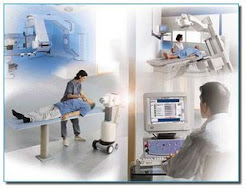 Hemophilia is bleeding deviation because the lack of blood coagulation factors. Hemophilia consists of three common types and is often called The Royal Diseases. This disease is marked by the spontaneous heavy bleeding and aberration which can cause chronic pain. Hemophilia more occurred in men, because they have only one chromosome X. Women are generally just to be the natural carrier.
Hemophilia is bleeding deviation because the lack of blood coagulation factors. Hemophilia consists of three common types and is often called The Royal Diseases. This disease is marked by the spontaneous heavy bleeding and aberration which can cause chronic pain. Hemophilia more occurred in men, because they have only one chromosome X. Women are generally just to be the natural carrier.But women can also suffer hemophilia if men with hemophilia married to women carrier hemophilia. For medical care, patients with hemophilia must wear a bracelet or necklace hemophilia.
Hemophilia is also a genetic disorder—usually inherited—of the mechanism of blood clotting. Depending on the degree of the disorder present in an individual, excess bleeding may occur only after specific, predictable events (such as surgery, dental procedures, or injury), or occur spontaneously, with no known initiating event.

Hemophilia divided into three types, namely:
Hemophilia A:
Hemophilia A is the most common hereditary disease associated with serious bleeding. It is caused by a reduction in the amount or activity of factor VIII. This protein serves as a cofactor for factor IX in the activation of factor X in the coagulation cascade. Hemophilia A is inherited as an X-linked recessive trait, and thus occurs in males and in homozygous females.
However, excessive bleeding has been described in heterozygous females, presumably due to extremely unfavorable lyonization (inactivation of the normal X chromosome in most of the cells). Approximately 30% of patients have no family history; their disease is presumably caused by new mutations. 1 in 5,000 males are affected.
* Classic Hemophilia, the type of Hemophilia that mostly lack of the blood coagulation factors. A hemorrhagic diathesis resulting from a deficiency of antihemophilic globulin (AHG); inherited as a recessive sex-linked characteristic and characterized by recurrent bouts of bleeding from even trivial injury. The coagulation time is prolonged, but the bleeding time is normal.
* Factor VIII Deficiency Hemophilia, occurs because of lack of factor 8 (Factor VIII) protein in blood that cause problems in the process of blood coagulation.
Hemophilia B:
Hemophilia B is a blood clotting disorder that similar to hemophilia A but it caused by a congenital deficiency of factor IX. A hemorrhagic diathesis resulting from a deficiency of plasma thromboplastin component (PTC); transmitted as a sex-linked recessive characteristic and characterized clinically by the same manifestations as classic hemophilia. There is a delay in the generation of thromboplastin. The platelet count, bleeding time, tourniquet test, and thrombin and prothrombin times are normal.
* Christmas Disease, A type of hemophilia that is caused by a deficiency of factor IX. Found for the first time in a boy from Canada named Steven Christmas.
* Hemophilia Factor IX deficiency, occurs because of lack of factor 9 (Factor IX) protein in blood that cause problems in the process of blood coagulation.
Hemophilia C:
Hemophilia C is a mild form of hemophilia affecting both sexes. However, it predominantly occurs in Jews of Ashkenazi descent. It is the fourth most common coagulation disorder after von Willebrand's disease and hemophilia A and B. In the USA it is thought to affect 1 in 100,000 of the adult population, making it 10% as common as hemophilia A.
Person with Hemophilia C has low levels of or is missing completely factor 11 (Also called FXI or factor XI deficiency) Hemophilia C is 10 times more rare than type A or B. Factor XI deficiency in Hemophilia C is different from the other types of Hemophilia, because it can show up in both males and females.

Hemophilia A, B or C is a disease that is rarely found. Hemophilia happen at least between 1 in 10,000 people. Hemophilia B more rarely found, namely between 1 in 50,000 people. Hemophilia C is the most rare found, It is occurs only between 1 in 100,000 people.

 Read Via RSS Feed
Read Via RSS Feed




